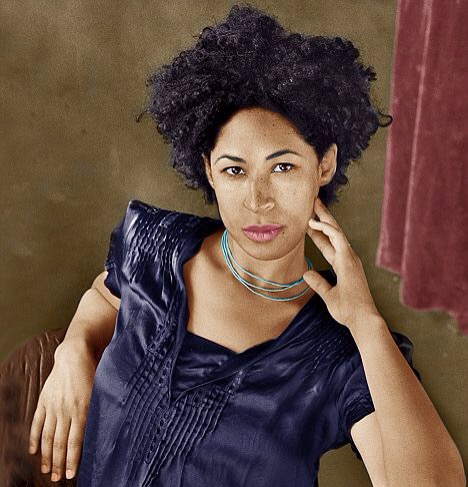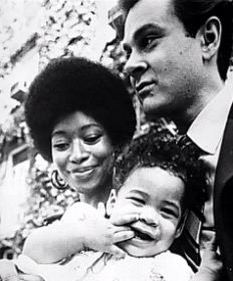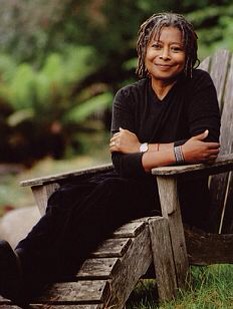It appears as if college is a return to pre-school. I refuse to send my kids to a school that has “trigger warnigns”, “safe spaces,” and feels that the student body needs to be protected in this way. This is totally ridiculous.
This is a grea comment: “Education occurs when you’re exposed to the world, and shielding yourself from it means that you’re not receiving an education. If there are things that you find too sensitive to bear, then you shouldn’t attend that meeting or take that course. Stay at home, in your room, with the windows shut and the TV off. But don’t expect a university to alter its core mission in some misguided attempt to prevent people from being exposed to reality. If this were to happen, the students who were the most afraid of knowledge who would be setting the curricula. What kind of education would that provide?”
An excpert from this article: http://mobile.nytimes.com/2015/03/22/opinion/sunday/judith-shulevitz-hiding-from-scary-ideas.html?smid=tw-share&_r=1&referrer=

KATHERINE BYRON, a senior at Brown University and a member of its Sexual Assault Task Force, considers it her duty to make Brown a safe place for rape victims, free from anything that might prompt memories of trauma.
So when she heard last fall that a student group had organized a debate about campus sexual assault between Jessica Valenti, the founder of feministing.com, and Wendy McElroy, a libertarian, and that Ms. McElroy was likely to criticize the term “rape culture,” Ms. Byron was alarmed. “Bringing in a speaker like that could serve to invalidate people’s experiences,” she told me. It could be “damaging.”
Ms. Byron and some fellow task force members secured a meeting with administrators. Not long after, Brown’s president, Christina H. Paxson, announced that the university would hold a simultaneous, competing talk to provide “research and facts” about “the role of culture in sexual assault.” Meanwhile, student volunteers put up posters advertising that a “safe space” would be available for anyone who found the debate too upsetting.
The safe space, Ms. Byron explained, was intended to give people who might find comments “troubling” or “triggering,” a place to recuperate. The room was equipped with cookies, coloring books, bubbles, Play-Doh, calming music, pillows, blankets and a video of frolicking puppies, as well as students and staff members trained to deal with trauma.
Emma Hall, a junior, rape survivor and “sexual assault peer educator” who helped set up the room and worked in it during the debate, estimates that a couple of dozen people used it. At one point she went to the lecture hall — it was packed — but after a while, she had to return to the safe space. “I was feeling bombarded by a lot of viewpoints that really go against my dearly and closely held beliefs,” Ms. Hall said.

Safe spaces are an expression of the conviction, increasingly prevalent among college students, that their schools should keep them from being “bombarded” by discomfiting or distressing viewpoints. Think of the safe space as the live-action version of the better-known trigger warning, a notice put on top of a syllabus or an assigned reading to alert students to the presence of potentially disturbing material.
Some people trace safe spaces back to the feminist consciousness-raising groups of the 1960s and 1970s, others to the gay and lesbian movement of the early 1990s. In most cases, safe spaces are innocuous gatherings of like-minded people who agree to refrain from ridicule, criticism or what they term microaggressions — subtle displays of racial or sexual bias — so that everyone can relax enough to explore the nuances of, say, a fluid gender identity. As long as all parties consent to such restrictions, these little islands of self-restraint seem like a perfectly fine idea.
But the notion that ticklish conversations must be scrubbed clean of controversy has a way of leaking out and spreading. Once you designate some spaces as safe, you imply that the rest are unsafe. It follows that they should be made safer.
This logic clearly informed a campaign undertaken this fall by a Columbia University student group called Everyone Allied Against Homophobia that consisted of slipping a flier under the door of every dorm room on campus. The headline of the flier stated, “I want this space to be a safer space.” The text below instructed students to tape the fliers to their windows. The group’s vice president then had the flier published in the Columbia Daily Spectator, the student newspaper, along with an editorial asserting that “making spaces safer is about learning how to be kind to each other.”
A junior named Adam Shapiro decided he didn’t want his room to be a safer space. He printed up his own flier calling it a dangerous space and had that, too, published in the Columbia Daily Spectator. “Kindness alone won’t allow us to gain more insight into truth,” he wrote. In an interview, Mr. Shapiro said, “If the point of a safe space is therapy for people who feel victimized by traumatization, that sounds like a great mission.” But a safe-space mentality has begun infiltrating classrooms, he said, making both professors and students loath to say anything that might hurt someone’s feelings. “I don’t see how you can have a therapeutic space that’s also an intellectual space,” he said.
I’m old enough to remember a time when college students objected to providing a platform to certain speakers because they were deemed politically unacceptable. Now students worry whether acts of speech or pieces of writing may put them in emotional peril. Two weeks ago, students at Northwestern University marched to protest an article by Laura Kipnis, a professor in the university’s School of Communication. Professor Kipnis had criticized — O.K., ridiculed — what she called the sexual paranoia pervading campus life.
The protesters carried mattresses and demanded that the administration condemn the essay. One student complained that Professor Kipnis was “erasing the very traumatic experience” of victims who spoke out. An organizer of the demonstration said, “we need to be setting aside spaces to talk” about “victim-blaming.” Last Wednesday, Northwestern’s president, Morton O. Schapiro, wrote an op-ed article in The Wall Street Journal affirming his commitment to academic freedom. But plenty of others at universities are willing to dignify students’ fears, citing threats to their stability as reasons to cancel debates, disinvite commencement speakers and apologize for so-called mistakes.
At Oxford University’s Christ Church college in November, the college censors (a “censor” being more or less the Oxford equivalent of an undergraduate dean) canceled a debate on abortion after campus feminists threatened to disrupt it because both would-be debaters were men. “I’m relieved the censors have made this decision,” said the treasurer of Christ Church’s student union, who had pressed for the cancellation. “It clearly makes the most sense for the safety — both physical and mental — of the students who live and work in Christ Church.”
A year and a half ago, a Hampshire College student group disinvited an Afrofunk band that had been attacked on social media for having too many white musicians; the vitriolic discussion had made students feel “unsafe.”
Last fall, the president of Smith College, Kathleen McCartney, apologized for causing students and faculty to be “hurt” when she failed to object to a racial epithet uttered by a fellow panel member at an alumnae event in New York. The offender was the free-speech advocate Wendy Kaminer, who had been arguing against the use of the euphemism “the n-word” when teaching American history or “The Adventures of Huckleberry Finn.” In the uproar that followed, the Student Government Association wrote a letter declaring that “if Smith is unsafe for one student, it is unsafe for all students.”
“It’s amazing to me that they can’t distinguish between racist speech and speech about racist speech, between racism and discussions of racism,” Ms. Kaminer said in an email.
The confusion is telling, though. It shows that while keeping college-level discussions “safe” may feel good to the hypersensitive, it’s bad for them and for everyone else. People ought to go to college to sharpen their wits and broaden their field of vision. Shield them from unfamiliar ideas, and they’ll never learn the discipline of seeing the world as other people see it. They’ll be unprepared for the social and intellectual headwinds that will hit them as soon as they step off the campuses whose climates they have so carefully controlled. What will they do when they hear opinions they’ve learned to shrink from? If they want to change the world, how will they learn to persuade people to join them?
Only a few of the students want stronger anti-hate-speech codes. Mostly they ask for things like mandatory training sessions and stricter enforcement of existing rules. Still, it’s disconcerting to see students clamor for a kind of intrusive supervision that would have outraged students a few generations ago. But those were hardier souls. Now students’ needs are anticipated by a small army of service professionals — mental health counselors, student-life deans and the like. This new bureaucracy may be exacerbating students’ “self-infantilization,” as Judith Shapiro, the former president of Barnard College, suggested in an essay for Inside Higher Ed.
But why are students so eager to self-infantilize? Their parents should probably share the blame. Eric Posner, a professor at the University of Chicago Law School, wrote on Slate last month that although universities cosset students more than they used to, that’s what they have to do, because today’s undergraduates are more puerile than their predecessors. “Perhaps overprogrammed children engineered to the specifications of college admissions offices no longer experience the risks and challenges that breed maturity,” he wrote. But “if college students are children, then they should be protected like children.”
Another reason students resort to the quasi-medicalized terminology of trauma is that it forces administrators to respond. Universities are in a double bind. They’re required by two civil-rights statutes, Title VII and Title IX, to ensure that their campuses don’t create a “hostile environment” for women and other groups subject to harassment. However, universities are not supposed to go too far in suppressing free speech, either. If a university cancels a talk or punishes a professor and a lawsuit ensues, history suggests that the university will lose. But if officials don’t censure or don’t prevent speech that may inflict psychological damage on a member of a protected class, they risk fostering a hostile environment and prompting an investigation. As a result, students who say they feel unsafe are more likely to be heard than students who demand censorship on other grounds.
The theory that vulnerable students should be guaranteed psychological security has roots in a body of legal thought elaborated in the 1980s and 1990s and still read today. Feminist and anti-racist legal scholars argued that the First Amendment should not safeguard language that inflicted emotional injury through racist or sexist stigmatization. One scholar, Mari J. Matsuda, was particularly insistent that college students not be subjected to “the violence of the word” because many of them “are away from home for the first time and at a vulnerable stage of psychological development.” If they’re targeted and the university does nothing to help them, they will be “left to their own resources in coping with the damage wrought.” That might have, she wrote, “lifelong repercussions.”
Read the entire piece HERE: http://mobile.nytimes.com/2015/03/22/opinion/sunday/judith-shulevitz-hiding-from-scary-ideas.html?smid=tw-share&_r=1&referrer=














